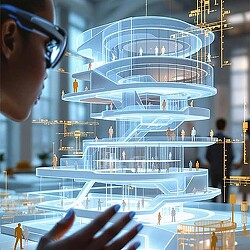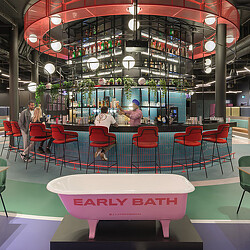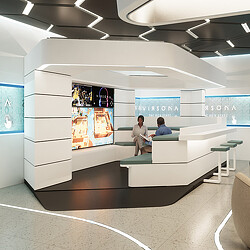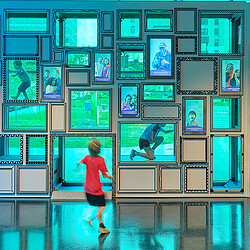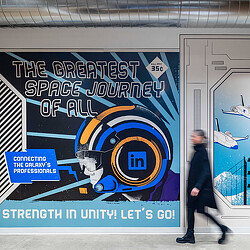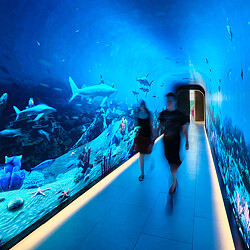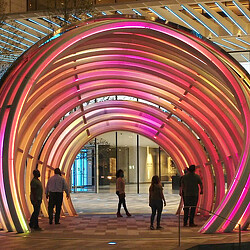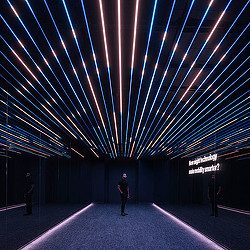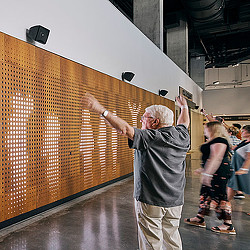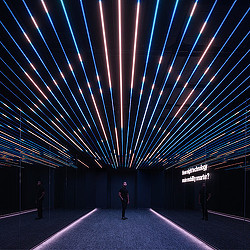Beyond the Screen: Exploring the World of Museums & Experiential Technology
Digital experiences in museums, exhibits, and other interpretive spaces go beyond the screen for dynamic and memorable storytelling.
In today’s digital era, many of us spend a lot of time staring at screens — in conference rooms, waiting to board planes, ordering overpriced salads — and asking ourselves “Isn’t there more to digital experience than this?” For those of us seeking respite from digital devices and sensory overload, museums may hold some of the answers.
Museums and close cousins like innovation centers have long been leaders in integrating a range of interactive technology and dynamic media, at first to multiply layers of information in their exhibits, then to offer patrons the ability to control their own interpretation. As these capabilities of technology have spread beyond the museum into other realms — such as the trend of spectacles like “Van Gogh: The Immersive Experience” or “Beyond Monet” — the imperative for storytelling innovation has continually expanded the possibilities of digital experience design, offering us new ways to connect to our physical surroundings and to each other — and, as Gensler’s research into immersive design has shown, those connections are what drive deep engagement.
Here are three adaptable tactics from museums, exhibits, and other interpretive spaces that show us that digital experiences are possible off the screen:
Bringing the Physical to Life
Physical artifacts allow us to appreciate craft and beauty and make even the distant past feel present and tangible. Physical models help us see things at a scale we can understand, from tiny molecules to massive buildings. By revealing unseen information or animating their surfaces, digital technologies such as projection mapping and augmented reality can amplify these abilities of physical objects, making our experience more magical and, in the process, more meaningful.
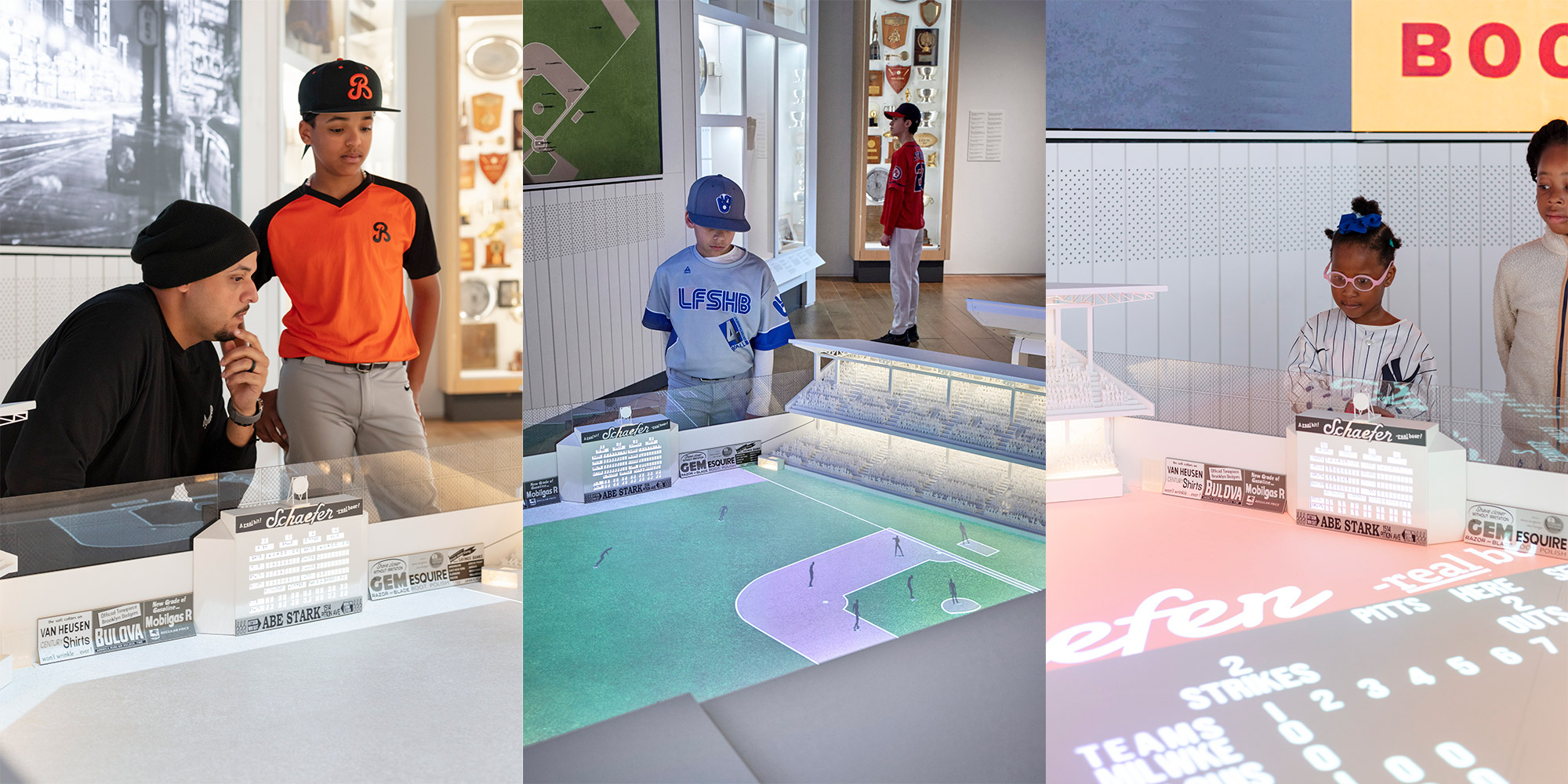
In the Jackie Robinson Museum in New York, a static white model of Ebbets Field suddenly comes alive using embedded LED lights and motion graphics projected from above, an overlay of energy and activity that immerses patrons in Jackie’s story and legacy. Milestones featured on surrounding displays are grounded in a sense of place, synced to the projection.
At the AKC Museum of the Dog in New York, visitors learn about dog breeds through an AR scavenger hunt, matching the artworks on display with the correct breeds. Finding hidden information around the museum using the app becomes a device for greater appreciation of the art collection and the animals it celebrates.
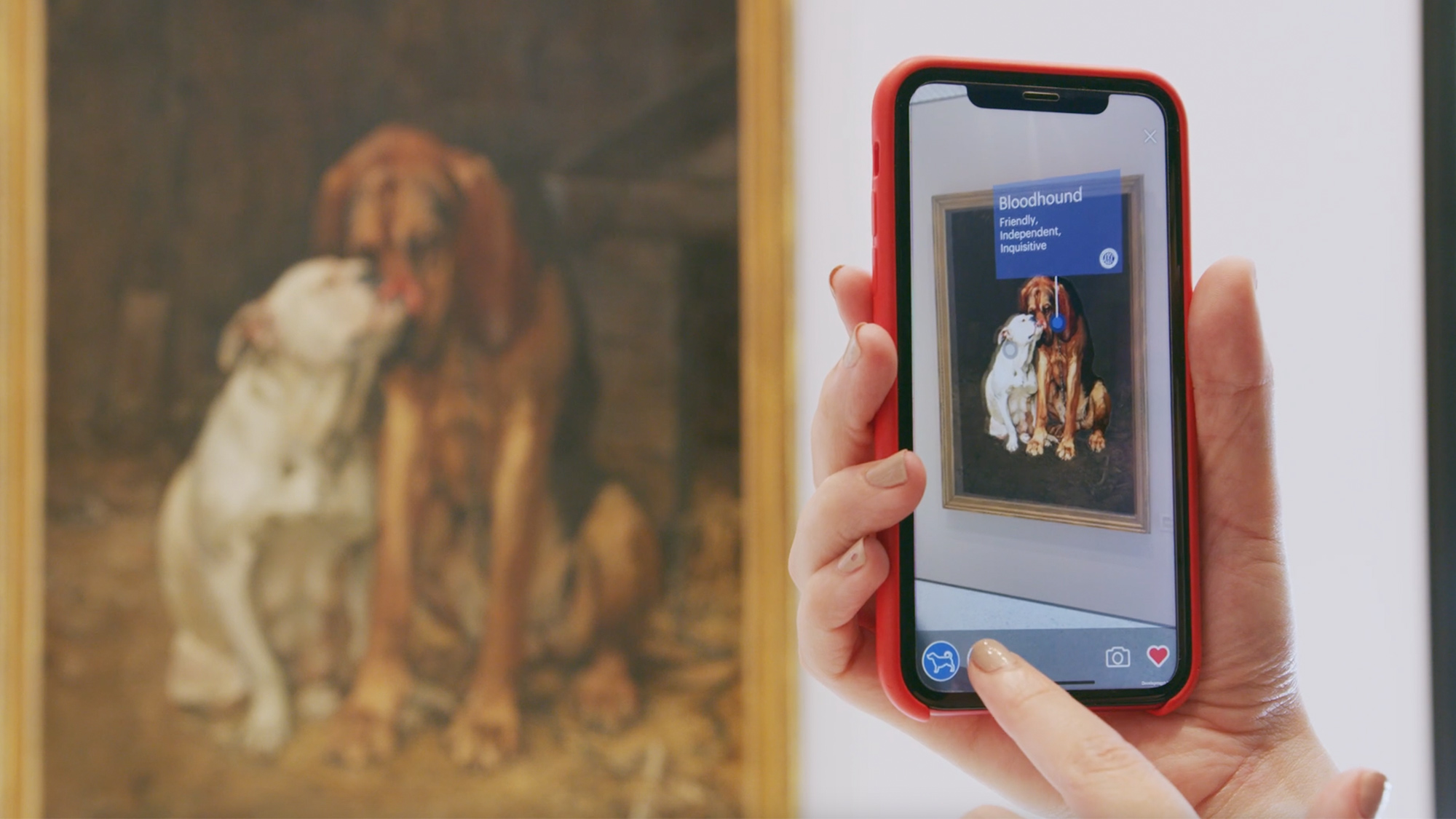
Immersing in a New Mindset
Many people’s first experience of being truly transported, of understanding that the world is bigger than they are, is at a planetarium or aquarium. Being surrounded by the night sky or walking under the water can shift our perspective and open us up to new ideas. Digital technologies are one of the primary tools museums and interpretive spaces utilize to create this sense of immersion, with dynamic and multisensory elements enabling an entire space to transform in an instant.
At the the Verizon Innovation Center in San Francisco, The Bridge is a room-scale interpretation of cellular networks intended to transition visitors from a multi-user reception and café into areas dedicated to inventing the future. Visitors marvel at dramatic differences in network speed visualized on a series of overhead displays. These thin digital strips run along the ceiling while an ambient soundscape enhances the storytelling.
At the LG Transparent Future Exhibit featured at the Sejong Museum of Art in Seoul, South Korea, a series of spatialized, theatrical vignettes invited patrons to explore a future where the virtual world integrates seamlessly into our everyday spaces. Patrons stepped inside familiar environments, such as a subway car or museum, and suddenly information appeared on surfaces that seemed to be windows or floors, demonstrating the potential and desirability of transparent technology.
Exploring Connections Together
When we are wrestling with a new concept, hands-on learning enables us to leverage our bodies with gestures and motor memory reinforcing the ideas. We amplify the educational benefits when we add a social dimension. We can see this on display in learning centers, from science labs to children’s museums. Multi-player touch tables become collaboration surfaces where we uncover insights we might not arrive at alone. Interactive exhibits that require gestures and movement bring kinesthetic learning and fun, providing opportunities for connection and in-real-life interaction that builds excitement and authentic engagement.
AKC Museum of the Dog demonstrates this strategy as well. In addition to the Augmented Reality scavenger hunt, visitors can use voice and hand signals to train a virtual puppy in basic obedience skills. The avatar of a Labrador Retriever responds in real time to the gestures and voice commands, providing a playful and edifying experience about the different types of jobs and training required for police, therapy, and search dogs. As they interact with the experience, their movements serve as a highly visible invitation for others to participate.
In another area, a centralized touch table is a portal to shared discovery, positioning visitors next to and across from each other as they playfully explore more information about different dog breeds. Visitors reach into the middle of the table and use their finger to pull down a digital dog from a scrolling lineup reminiscent of the walks that contestants take around the floor at AKC shows. This physical gesture and the ambient awareness the experience creates encourage social interaction and can spark curiosity about each other.
What’s Next?
What should designers working in the built environment take away from these tactics and examples? With thoughtful and creative uses of technology in the spaces where we live, work, and play, the stories of clients and communities can become more tangible, accessible, and impactful. When designers think beyond the screen, experiences for audiences — from employees to passengers to customers — can become more meaningful and memorable.
Exhibits and immersive experiences demonstrate that digital experiences can be used to create shared, hands-on interactions, transform entire spaces into multisensory environments, and layer digital storytelling onto physical objects, shifting our focus from the screens around us and empowering us to connect to each other and to the world around us.
For media inquiries, email .


